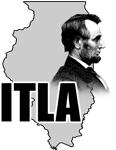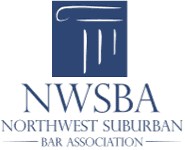121 S. Wilke Road, Suite 301, Arlington Heights, IL 60005
Home and Hospital Visits for Your Convenience
Serving Clients Across 7 Illinois Locations
Coping With Malingering Diagnoses In Injury Cases
By: Gary Newland & Andrew Mathews
While accusations of malingering or a failed neuropsychological test can harm a plaintiffs case, such findings do not end the plaintiff's chance at obtaining reasonable compensation. Rather, recent scientific studies and relevant court precedent, are valuable tools for plaintiffs facing an unyielding insurance company. Literature on stroke victims, neuropsychological tests in general, test environment, and test fatigue, all combine to provide plaintiffs with a counterattack if accused of malingering. This article will address countering findings from neuro psychological tests which imply malingering where there is none.
Research into stroke victims demonstrates an important facet of brain injuries legal counsel sometimes overlook. The specialties of different brain regions manifest themselves most obviously in stroke patients. Stroke victims have lesions of dead tissue clearly visible on brain scans. One experiment studied stroke victims with lesions resulting from an injury located in the Right Occipital Parietal (ROP) region of the brain. That group of patients showed dramatic impairment in some experiments, while recording scores in the normal range for 2D-Form-From-Mo-tion tasks1. Damage to the ROP region disrupts motion analysis and vision2. Lesions to another region, the Right Occipital Temporal (ROT) area interfere with the ability to extract the exact form of motion3. Two sets of test subjects, one with ROP stroke damage and the other with ROT stroke damage, show divergent performances on tests of types of brain function4. Other studies reinforce this finding. A significant relationship exists between the hemisphere of the lesion and the patient's ability to see images in a region of their field of vision5. Lesions in the anterior frontal region were an exception6.
Meanwhile, there is evidence computation of the motion of certain types of objects is actually a three stage model, instead of the traditional two stage model7. Small spatial scale mechanisms are vital for processing some information8. Damage to small regions of the brain can account for deficits in certain tasks but passable efforts elsewhere9. Practice in a verbal working memory task such as running through a battery of neuropsychological exams increases certain signals and brain activity over certain regions of the brain while other, less necessary regions become less active10. Notably, the studies above used persons with documented injuries, often stroke patients, so whether or not the patient was malingering was not an issue11.
The results of the studies deserve serious consideration for lawyers proving a client is suffering brain injury or damage. In the case of localized brain damage, tests built on one type of mental function may downplay or even ignore the damage to the patient. Similar research has delved into this issue. One study hypothesized that all symptom validity testing procedures will not be equally sensitive in all areas due to differences in the relevance of the test material to the complaint presented by the patient12. The same study found a large gap in failure rates between the tests used. In fact, 32% of subjects failed the Word Memory Test (WMT), compared to 17% for Computerized Assessment of Response Bias (CARB) and 11% for the Test of Memory Malingering (TOMM)13. The three tests focused on word lists, digit recognition, and picture recognition, respectively14. The researchers found a discrepancy of such magnitude was unlikely due to differences in how the tests registered the subjects' exaggerations15. More likely, the discrepancies are due to one test being relatively insensitive to cognitive exaggeration or due to different tests focusing on skills centered in different brain regions16.
Much data supports this hypothesis. The Mini Mental State Examination (MMSE) relies heavily on verbal response, reading, and writing, and regions of the brain responsible for those skills17. The Test of Memory Malingering (TOMM) is a 50-item visual recognition test designed to distinguish malingering from genuine memory impairments18. Trail Making A and B exams focus on the impairment of language functions, including the recognition of numbers and letters. These correlate with left hemisphere lesions, with impairment of reading ability commonly associated with left posterior or anterior occipital lesions19. The WCST, a measurement of function involving classification of cards according to a set of rules, tests executive function and is sensitive to frontal lobe dysfunction20. Each of the relevant tests for mental malingerers focuses on a particular brain region. A test can therefore be scientifically sound enough to be reliable and at the same time be biased against a test subject who fits a certain profile. Neuropsychologists have insisted that individual tests, especially the Fake Bad Scale (FBS), never be used alone and instead the score of a single test must be combined with other validity test indicators21 .
Interspersed in the literature regarding what areas of the brain certain tests focus on are detailed instructions for testgivers. The WCST must be carried out by a trained technician22. Other studies of the WCST reveal the type of instructions given to test takers has a significant effect on recorded scores23. Pake Bad Scale (FBS) scores must be "considered in the context of scores on other validity scales, the circumstances of the assessment, and any conditions such as significant physical injury or disease that could artificially elevate scores on the FBS"24. In the MMSE, nonstandard actions by the evaluator that affect test attitude or social reinforcement for participation can affect scores on the particular neuro-physiological exam across a range of testing situations25 . Further, evaluators should give little weight to MMSE scores in clinical decisions unless scores are extreme26. One experiment sets forth a detailed testing procedure for accurate results27. The Gervais study required two days to complete the entire battery of needed tests28, and the test detailed in Cognitive Brain Research calls for frequent breaks in the regimen29. In a study in Clinical Neurophysiology, three Perm State researchers investigated mental fatigue associated with mTBI to learn if fatigue effects due to testing effort confound efforts to measure injuries30. Their study showed prolonged administration of testing induces increased fatigue, while the reported rate of fatigue in earlier experiments and tests remains constant31. Subjects endured a 90 minute battery of cognitive performance tests. The time required to complete certain tasks dropped as the subjects learned how to approach similar problems from previous iterations of their testing32. Certain types of brain activity began increasing33. In sum, the effects of increased fatigue in multiple areas, including subjective, cognitive and physiological fatigue, manifested themselves over the course of a 90 minute battery of an aggregation of tests. Also, brain activity rises in some regions of the brain due to practice at mental tests. The factors combine to render baselines for many tests suspect if said tests are used too close together or target specific areas of the brain which may be undamaged in a certain patient.
Armed with these facts, prepared counsel can advocate for his client in the face of a test result that implies malingering. When cross examining the defendant's expert who carried out the tests a strategy that tends to explain or discredit a witness' direct testimony is proper, and evidence that might otherwise not be admissible may be admissible if used to test the credibility of an expert or the expert's testing regimen34. Consider targeting the following themes when deposing a defense expert witness:
TESTING PROCEDURE
- How long was the plaintiff subjected to testing?
- In what order were tests given?
- How many times was the subject tested?
- Was the test administered in the patient's native language?
EFFICACY OF TEST GIVER, TEST SCORER, AND PARTICULAR TEST RESULT
- Were the persons giving the test and analyzing the data qualified to do so?
- On which portion of the brain did the test indicating malingering focus?
- Were the administered versions of tests the current iteration of said tests?
- Was there more than one test that suggested the plaintiff is malingering?
PATIENT'S MEDICAL FACTORS
- Was the plaintiff on any medication?
- What was the medical condition of the plaintiff at the time of the test?
Applying the above can effectively neutralize defense witnesses who claim to hold objective proof of plaintiff's malingering.
To obain a complete list of citations, please contact the offices or call 847-797-8000.
Gary Newland is with the law firm of Newland & Newland, LLP and is the Co-Chair of the Civil Litigation Committee, Gary is also serving his first term on the NWSBA Board of Governors.
Andrew Mathews was a Summer Associate at the Newland and Newland law firm and is a current student at the University of Notre Dame Law SchooL

 Spanish
Spanish Cantonese
Cantonese



















